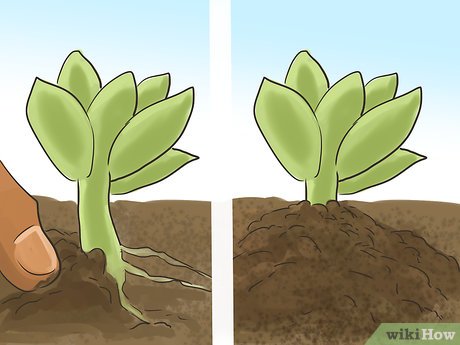Rooting hormone plays a pivotal role in the delicate art of succulent propagation. These versatile plants, known for their aesthetic appeal and resilience, can regenerate from cuttings, making them a favorite among plant enthusiasts. However, the right technique and tools are essential to ensure successful propagation. This article will delve deeply into the functionalities of rooting hormone, its benefits, and the comprehensive steps necessary for propagating succulents effectively.
Understanding Root Hormones and Their Function
Rooting hormones, often composed of auxins, are chemical substances that facilitate the development of roots in plant cuttings. They work by enhancing root initiation, promoting faster root growth, and increasing the survival rate of the cuttings. The application of rooting hormone can substantially elevate the success rate when propagating succulents, especially for varieties that may be challenging to root naturally.
These hormones are available in several forms, including powders, gels, and liquids. Each formulation offers distinct advantages depending on individual propagation needs. For instance, powder hormones are easy to apply and are often favored for their convenience and efficiency. Conversely, gels provide a more controlled application, minimizing the risk of over-utilization.
Identifying the Right Succulents for Propagation
Not all succulents respond equally well to propagation efforts. Selecting the proper varieties is crucial for enhancing success rates. Some of the more forgiving and accessible species include:
1. Echeveria: Known for their rosette formations, Echeverias root remarkably well and are popular choices for beginners.
2. Jade Plant (Crassula ovata): Renowned for their resilience, Jade plants are not only easy to propagate but are also believed to bring good luck.
3. Sedum: With a variety of species, Sedums are adaptable and often root well from both leaf and stem cuttings.
4. Aloe Vera: While mainly propagated through offsets, Aloe can also benefit from rooting hormones when grown from leaf cuttings.
5. Haworthia: These succulents propagate with ease through offsets, but rooting hormones can assist when using leaf cuttings.
Preparing for Propagation: The Essentials
Successful propagation begins with meticulous preparation. Before diving into the propagation process, gather the necessary materials to ensure an efficient workflow. Below is a succinct list of essentials:
– Clean, sharp scissors or a knife: A clean cut minimizes damage to the succulent and reduces the risk of disease.
– Potting mix: Utilizing a well-draining medium is vital for succulent comfort; consider a specialized cactus or succulent mix.
– Containers: Small pots or trays that offer drainage are crucial for preventing root rot.
– Rooting hormone: Whether in powder, gel, or liquid form, having this at hand will bolster rooting success.
The Propagation Process: Step-by-Step Guide
With preparation and the right materials in hand, one can embark on the propagation journey. Follow these step-by-step instructions for optimal results:
1. Choose the Right Cutting: Aim for healthy, mature stems or leaves. For leaf cuttings, select plump, firm leaves; for stem cuttings, choose stems with several leaf nodes.
2. Make Your Cuts: Utilizing clean scissors or a knife, slowly and carefully cut your chosen parts at an angle. This increase in surface area aids root development.
3. Let It Callous: Allow the cuttings to dry and form a callous over the cut area. This usually should take anywhere from a few hours to a couple of days. This step is crucial to minimize the risk of rot once planted.
4. Apply Rooting Hormone: Lightly dip the cut ends of the succulent into the rooting hormone, ensuring an even coating. Tap off any excess to prevent clumping that could inhibit root growth.
5. Plant the Cuttings: Create a small hole in the potting mix using your finger or a stick, and gently place the cutting into the hole. Firm the soil around the base to provide stability.
6. **Water Sparingly**: After planting, lightly mist the surface of the soil without soaking it. Initiate a consistent watering regimen, allowing the soil to dry completely between waterings.
7. Provide Optimal Conditions: Ensure the propagating succulents receive adequate indirect sunlight and maintain a warm environment. High humidity can also bolster root development, but avoid overly damp conditions that promote rot.
Nurturing New Roots: Aftercare and Monitoring
Once the propagation process has commenced, maintaining an attentive approach will yield the best results. Be observant of your new cuttings, but don’t interfere excessively. Healthy roots typically begin appearing after a week or two, although some species may take longer. Patience is key.
If you notice any signs of rot or disease, such as a mushy base, it’s essential to act swiftly—remove the cutting, allow it to dry, and try propagating again if viable.
Conclusively, rooting hormone serves as an invaluable asset in successfully propagating succulents. By understanding the importance of proper technique and taking the time to nurture your plants, you can ensure a thriving collection of well-established succulents ready to flourish in your home or garden.





Leave a Comment